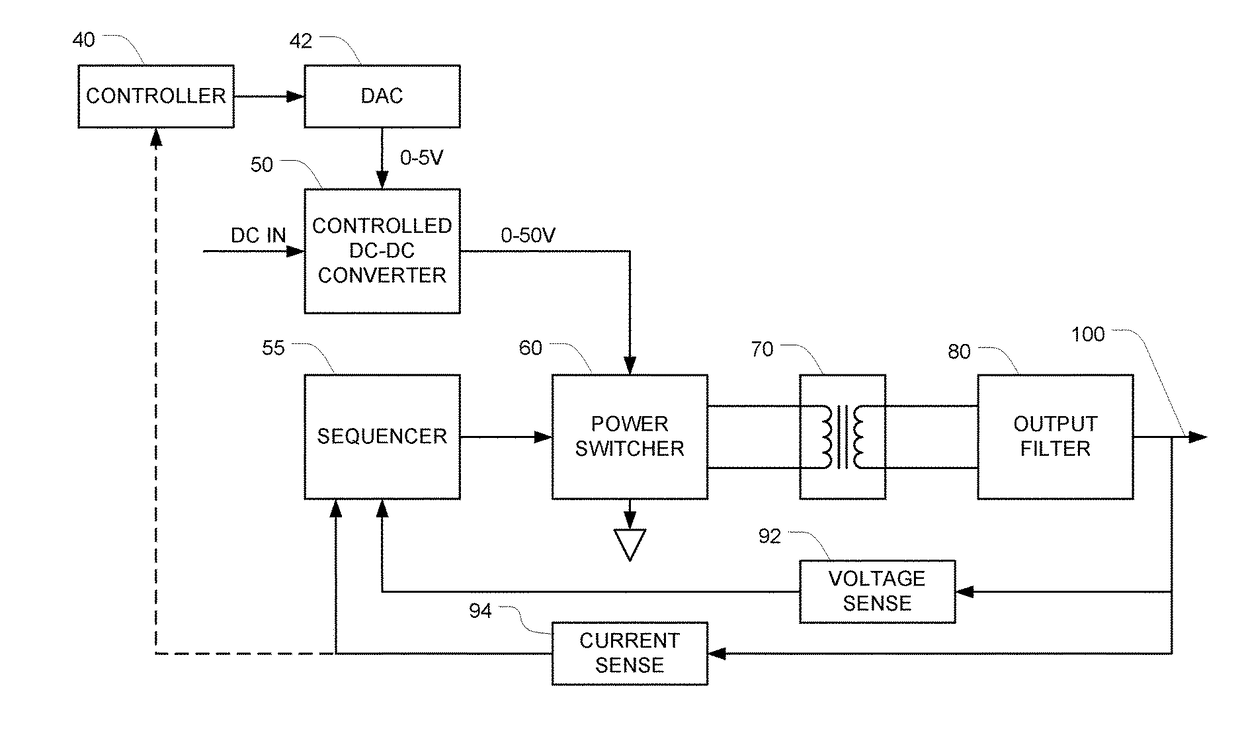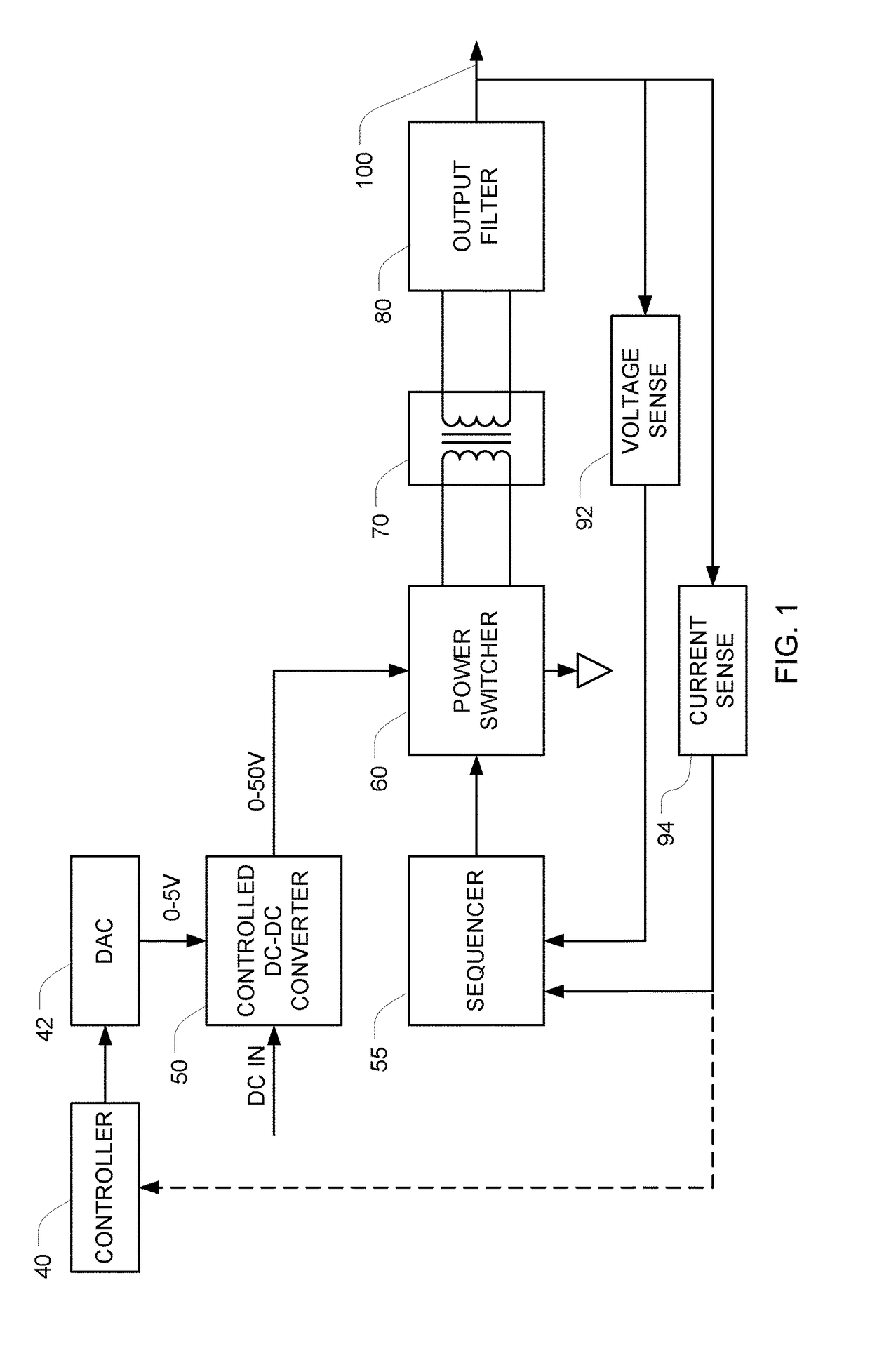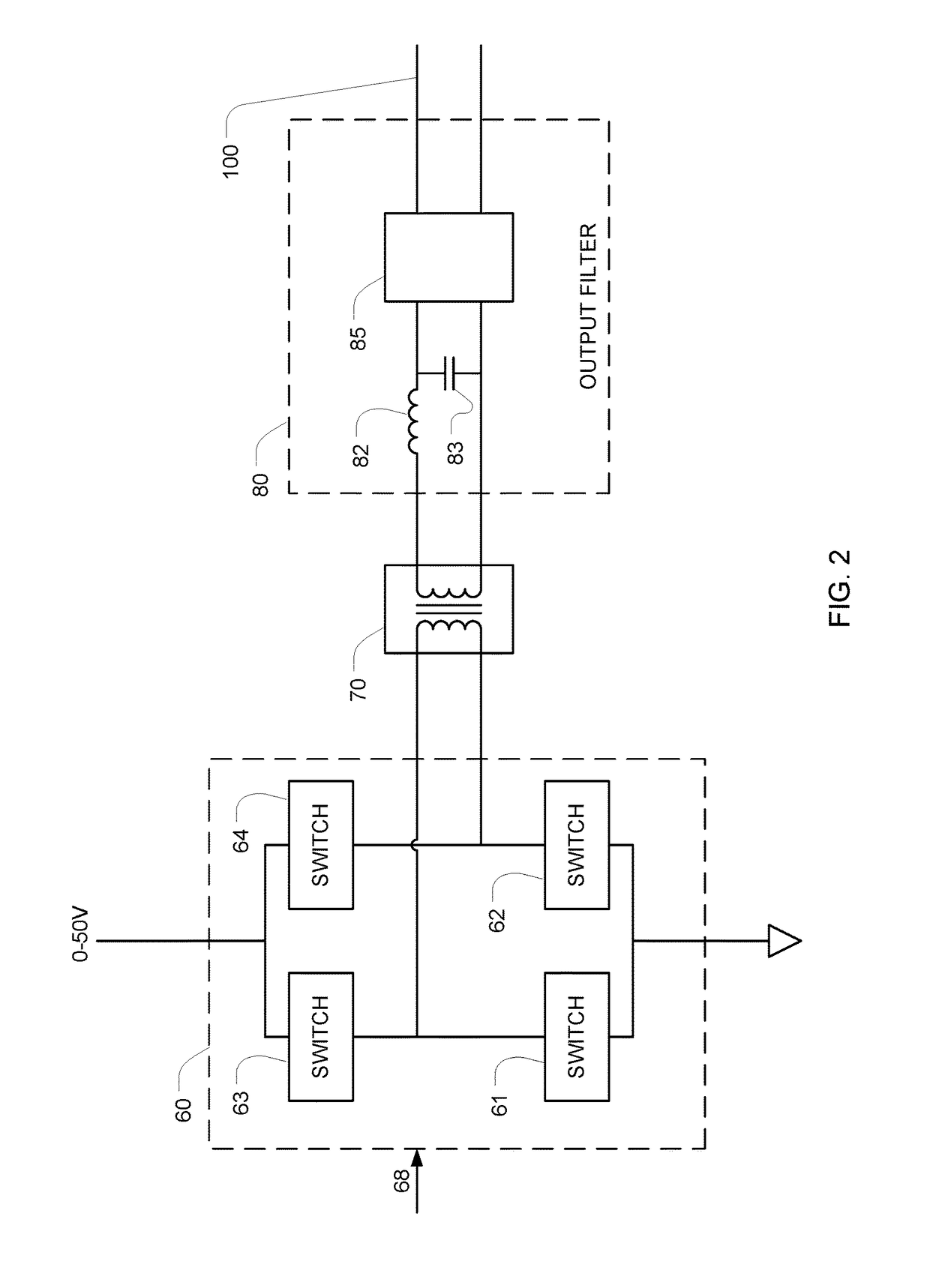High voltage, high efficiency sine wave generator with pre-set frequency and adjustable amplitude
a sine wave generator and high-efficiency technology, applied in the direction of digital data processing details, pulse automatic control, instruments, etc., can solve the problems of reducing battery life, complicating device design, and reducing heat loss by close to 50%
- Summary
- Abstract
- Description
- Claims
- Application Information
AI Technical Summary
Benefits of technology
Problems solved by technology
Method used
Image
Examples
first embodiment
[0040]FIG. 1 is a block diagram of a sinusoid generator that generates a sinusoid at a pre-set frequency f, with a controllable amplitude. Ultimately, the amplitude of the output sinusoid will be proportional to the output of the DC power source 50, which is preferably a controlled DC-DC converter.
[0041]In the illustrated embodiment, the DC to DC converter 50 is configured to multiply an analog voltage-control input signal by 10, so when a 1 V voltage-control signal is applied the output will be 10 V, and when a 5 V voltage-control signal is applied the output will be 50 V, with proportional control there between. The output of the DC-DC converter 50 can therefore take any value between 0 and 50 V, depending on the voltage (e.g., 0-5 V) that is applied to the analog voltage-control input. A controller 40 controls the output voltage of the DC-DC converter 50 by writing a control word to a digital-to-analog converter (DAC) 42. The DAC 42 then generates an analog voltage that is propor...
second embodiment
[0068]FIG. 5 is a block diagram of a sinusoid generator that generates a sinusoid at a pre-set frequency f, with controllable amplitude, in which n=2. As a result, there are two DC-DC converters 50, 50B and (following the formula N=2+4n) 10 samples per cycle are used. Note that in the FIG. 5-6 embodiment, components with similar reference numbers operate in a manner similar to the description above in connection with the FIG. 1-2 embodiment.
[0069]FIG. 7 depicts a sine wave 120 and an oversampled version of that sine wave 122 that is sampled 10 times per cycle (i.e., at 0°, 36°, 72°, . . . 324°, and 360°). Looking at this oversampled version 112, it becomes apparent that it contains only five voltage levels: a low positive voltage +V1, a higher positive voltage +V2, a low negative voltage −V1, a higher negative voltage −V2, and zero volts (between 0° and 36° and also between 180° and 216°). Here again, the zero Volt level exists because we have chosen the sampling times such that one...
PUM
 Login to View More
Login to View More Abstract
Description
Claims
Application Information
 Login to View More
Login to View More - R&D
- Intellectual Property
- Life Sciences
- Materials
- Tech Scout
- Unparalleled Data Quality
- Higher Quality Content
- 60% Fewer Hallucinations
Browse by: Latest US Patents, China's latest patents, Technical Efficacy Thesaurus, Application Domain, Technology Topic, Popular Technical Reports.
© 2025 PatSnap. All rights reserved.Legal|Privacy policy|Modern Slavery Act Transparency Statement|Sitemap|About US| Contact US: help@patsnap.com



